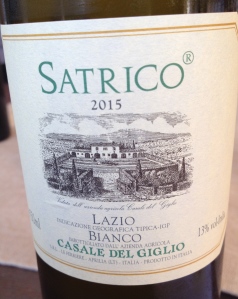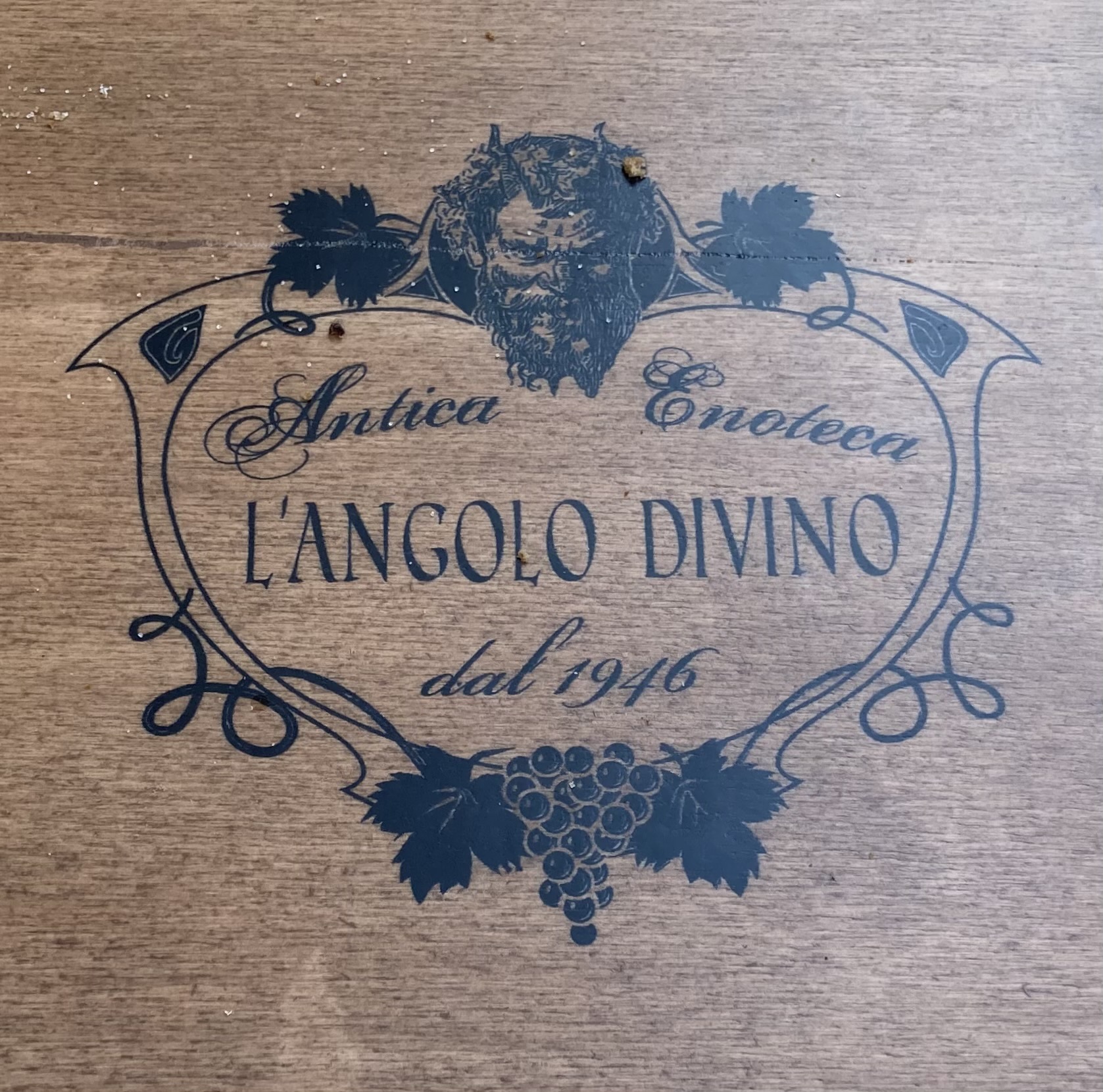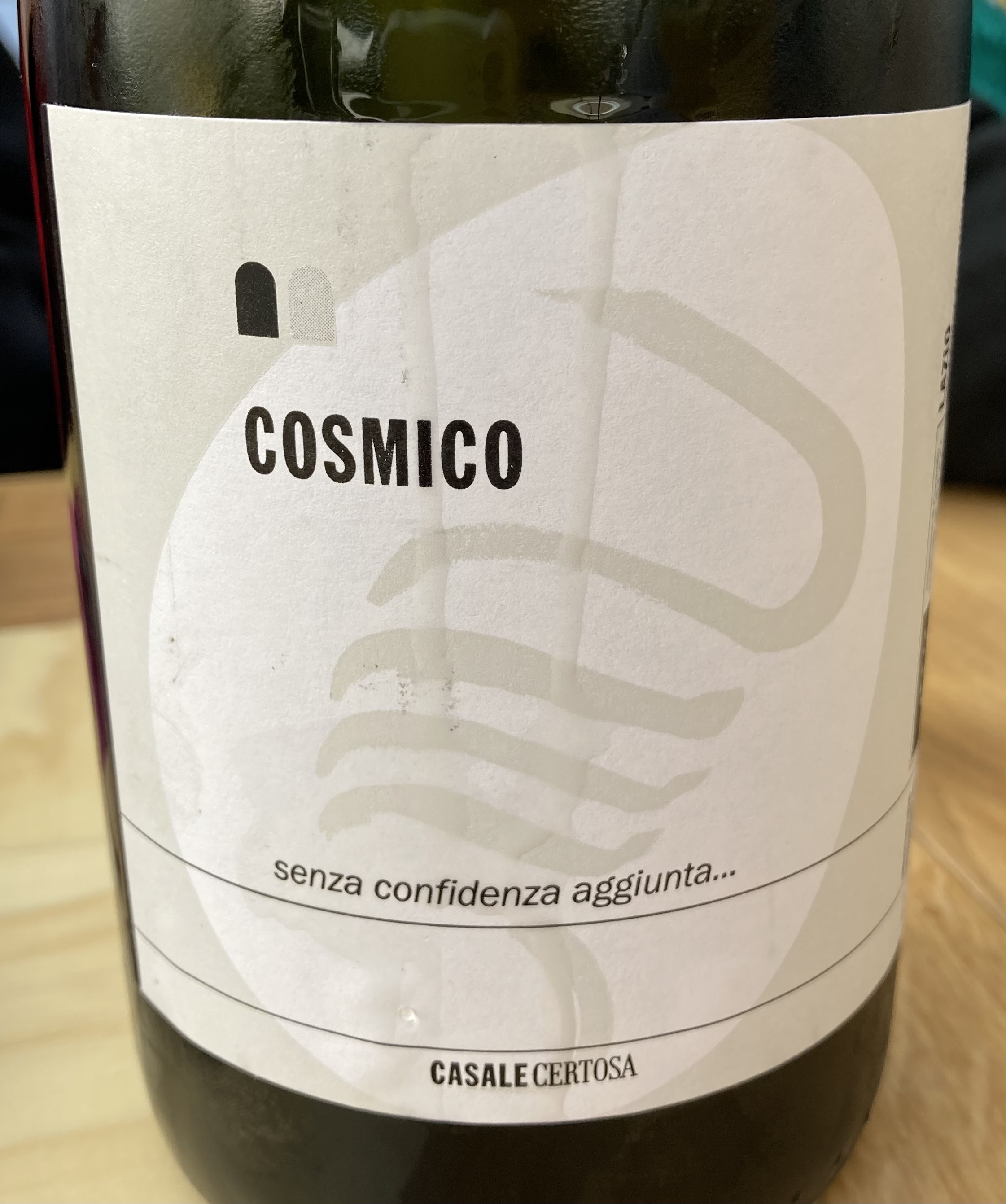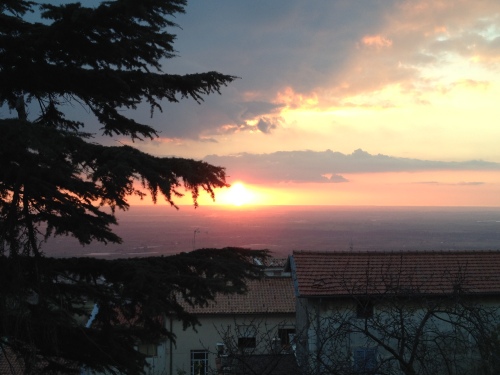Casale del Giglio was the last winery on my recent tour of three wineries south of Rome. I was familiar with this winery because when I was the wine director for I Trulli restaurant in NYC we carried their wines.

Elise
When John Curtas, a journalist from Las Vegas, and I arrived at the winery Elise Rialland gave us some background information. I had met Elise from the export office the night before in Rome. I had a nice time talking to her and her husband.
Dr. Berardino Santarelli, from the Appenine hill town of Amatrice, founded Casale del Giglio in 1967. The estate is between the town of Aprilia and Latina in the Agro Pontino valley about 50 miles from Rome. The winemaker is Paolo Tiefenthaler who also consults for other wineries and makes a methode classico spumante in Trento where he lives.
Paolo took us to the roof of the winery where we could see the vineyards. He said the area did not have much of a winemaking tradition and 60 different grape varieties were planted to determine see which ones would do best.
They converted the 180 hectares of vineyards to the cordon training system, planting the grapes which adapt well to the territory and produce quality wines such as: Syrah, Petit Verdot, Viognier, Petit Manseng and Tempranijo, plus other international and local varieties.

Paolo
They have 22 products, seven white wines, one rosé, seven reds, one late harvest, three grappas and an extra virgin olive oil.
We then went with Paolo to the cellars were he showed us a 225 liter demo barrel that is used to explain how wine develops in the barrel and its effects on the wine.
At lunchtime, we had one of the best meals that I have had at any winery in a very long time. They served two of my favorite pastas: Mezze Maniche alla Gricia
and Amatriciana and they were as good, if not better, than any I have eaten in Rome! For the lunch I have thank to Linda Siddera, the Int. Events and Hospitality Coordinator for the winery.
Linda with Elisa did the wine tasting for us
The Wines
Bellone Lazio Bianco DOC Knowing my interest in the Bellone grape, Elise said the variety is cited by Pliny the Elder (d.79 AD). Today the grape is cultivated from Rome to the Lepini hills around the costal town of Anzio where the warm sandy soils tempered by a relentless sea breeze provide the ideal microclimate. The grape is vigorous and resistant to drought, a guarantee of wine quality and balance. The grapes are plump, golden yellow, thick skinned and hang in elongated cone shaped bunches. The constant sea breeze contributes to the over ripeness of the grapes and a high concentration of sugar and acidity lead to early maturation and the wines’ mineral notes. Harvest takes place at the end of September. Vinification: maceration is on the skins followed by a soft pressing and spontaneous fermentation with indigenous yeast for about 10 to 12 days at 18 -20C. This is a balanced wine with tropical fruit aromas and flavors, hints of mango, floral and spice notes, good acidity and a long finish. The wine can age! 
Satrico Lazio Bianco IGT made from 40% Chardonnay, 40% Sauvignon and 30% Trebbiano Giallo. Only the best bunches are selected and after a soft pressing the first run juice is separated from the skins. The different varieties are vinified separately. A slow, temperature controlled continuous fermentation takes place for 7 or 8 days. After racking the wine matures in stainless steel tanks before it is bottled at the beginning of the following years. This is a fruity, crisp, lightly aromatic wine with hints of citrus fruit. The wine is named after the ancient pre-Roman town of Satricum.
Albiola Lazio Rosato IGT made from 85% Syrah and 15% Sangiovese, depending on the vintage. The dark skinned red grapes are lightly crushed and left in stainless steel tanks for several hours. After this initial period of cold maceration on the skins at 8 to 10°C some of the juice is “bled,” drained off from the tanks and fermented separately, a process known as saignéé from the French saigner to bleed. Fermentation is in stainless steel vats at about 18C for 8 to 10 days. The wine if floral and fruity with aromas and flavors of woodland berries dominated by strawberries and raspberries.
Cesanese Lazio Rosso IGT 100% Cesanese. The grape comes from the Latium Province of Frosinone around the hill towns of Affile and Piglio. It is a low yield late ripening variety, which lends itself to late harvest. The clusters are small, sparse and elongated, the berries oval and medium sized. Harvest does not take place until late October as the vineyards are situated on high, hilly slopes. Paolo said late ripening varieties normally make for a long lasting wine. The more days between flowering and maturity, the more suitable the wine will be for long aging. There is submerged, spontaneous fermentation at 18-20°C for about 20 days followed by a further 10/12 days of maceration on the skins to extract the very last traces of the tannins in which the skins and seeds of the Cesanese grape are particularly rich. The wine has red fruit aromas and flavors with hints of cherry and violets and a touch of spice.
Shiraz IGT Lazio made from 100% Syrah. Only the ripest and healthiest grapes are selected for vinification. Two days of cold maceration at about 10C takes place. Vinification continues with the punching down of the floating cap 3 or 4 times a day. The fermenting must is racked and returned (délestage) several times during the initial stages of the 10 to 12 day fermentation process at 28°C. The new wine is carefully drawn off into stainless steel vats for malolactic fermentation, the color, tannins and aroma still present in the fermented skins are extracted in the soft press to which they are gently persuaded to slide by force of natural gravity alone. The wine is aged in barriques for 8 to 12 months and for 6 months in bottle before release. The wine has hints of blackberry, blueberry, cherry, black pepper and a touch of violets.
Mater Matuta Lazio Rosso IGT. Made from 85% Syrah and 15 % Petit Verdot (proportions may vary slightly depending on the vintage.) The grapes are harvested when fully ripe and the Syrah may be slightly shriveled, and vinified in different ways. Submerged cap is used for the Syrah, which ferments on native yeasts for 18 to 20 days. During the first few days délestage takes place several times. Punching down is used for the Petit Verdot for the extraction of the grape’s tannins and polyphenolic compounds. The full-bodied Petit Verdot gives the wine its long aging potential, and the Syrah gives complexity of character. Each new wine goes into new barriques. Color, tannins and aromas still present in the fermented skins are extracted in the soft presses to which they slide by gravity. After 22 to 24 months in oak the wines are blended and left in the bottle for another 10 to 12 months. This is a big complex wine with hints of black cherry, spice, cinnamon and violets. It has a long finish and very pleasing after taste. This is their flagship wine. The name comes from the ancient Italic goddess of the dawn.
Chardonnay Lazio IGT– a wine that does not undergo malolatic fermentation and is aged for 3 to 4 months in stainless steel so the true varietal character comes through.
Sauvignon Blanc Lazio IGT (vinification and aging is like the Chardonnay) It is a very balanced wine with good acidity and a hint of grass.
Viognier Lazio Bianco IGT produced from fully ripe and over ripe grapes. The wine is stored on its lees in stainless steel tanks to prevent malolactic fermentation. It is a true expression of the Viognier grape.
Biancolella di Ponza IGT Bianco Lazio “Faro Della Guarda” in Lazio the wine made from the Biancolella can only be produced on the Island of Ponza which is off the southwest coast of Lazio. The grape is a native of Campania and came to Ponza from Ischia. However we did not get to taste this wine.
Aphrodisium-late harvest dessert wine made from Petit Mansegn, Viognier, Greco and Fiano, proportions depending on the vintage. These white grapes are harvested at different times. The Petit Manseng at the end of October when the clusters are well shriveled by the sea breeze. The sugar level is 30 to 32 Bobo(Brix in English) degrees (potential of about 18% alcohol.) The grapes are pressed whole to extract just the highly concentrated juice. No yeast is added. The solid parts of the grape are left behind and the ratio of must extracted to grapes pressed is no more than 30%. Fermentation occurs spontaneously in stainless steel vats at about 18°C. This wine has hints of citrus fruit, peach and honey with a refreshing mineral crispness, a long finish and a very pleasant after taste.
After the excellent lunch, John and I were offered grappa. The grappa is from the newly fermented skins from Casale del Giglio’s grapes but it is distilled at the Pilzer Distillery in Faver, Trento (it is illegal to have a distillery and winery on the same property in Italy.)
I selected the grappa made from Petit Manseng skins, which is a clear grappa. John selected the Petit Verdot, which is distilled the same way but is aged in wood and takes on a light brown color. It was the perfect way to end a wonderful lunch and visit.
 We have known the owner Massimo Crippa for many years. I enjoy speaking to Massimo about wine. Sometimes I will choose the wines and sometimes I will ask Massimo to choose the wine for me. This time I asked Massimo to select 3 local wines from around Rome.
We have known the owner Massimo Crippa for many years. I enjoy speaking to Massimo about wine. Sometimes I will choose the wines and sometimes I will ask Massimo to choose the wine for me. This time I asked Massimo to select 3 local wines from around Rome. Cosmico Vino Frizzante IGT Lazio 2019 Casale Certosa made from 100% Trebbiano from the Castelli Romani. The soil is of volcanic origin. The wine ferments in the bottle for about 12 months. Then there is the refermentation in bottle and the wine is disgorged by hand. Aging takes place in the bottle. The winery is certified organic. This is a wine with hints of citrus fruit, lemon a note of pear and a touch of apple with good acidity.
Cosmico Vino Frizzante IGT Lazio 2019 Casale Certosa made from 100% Trebbiano from the Castelli Romani. The soil is of volcanic origin. The wine ferments in the bottle for about 12 months. Then there is the refermentation in bottle and the wine is disgorged by hand. Aging takes place in the bottle. The winery is certified organic. This is a wine with hints of citrus fruit, lemon a note of pear and a touch of apple with good acidity. Assortment of Italian Cheese – We asked Massimo to choose a variety of local cheeses which were served with chestnut honey.
Assortment of Italian Cheese – We asked Massimo to choose a variety of local cheeses which were served with chestnut honey.




 Ossobuco
Ossobuco








































































































